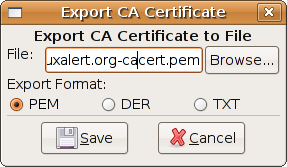Open Source Forum 2008 continued
As I wrote the other day I have visited the Swedish conference Open Source Forum.
It was a talk about buying the right thing after lunch the first day. All he said were things that everybody knows; focus on the functionality you need, do not buy a lot of extra functionality, more expensive is not better etc. It is always good to repeat those things. I still wounder why so many organizations pay for extra functionality they do not need.
The IT manager of the small city Osby then told us that they have converted their organization to Open Office. Those who needs the MS Office functionality can get it but its become more and more rare. Unfortunately the big suppliers of applications to governmental organizations integrates very close to MS Office and are unwilling to change that. I have talked to several cities that want it to change, but failed.
The second day became more technical focused with talks about PostgresSql/EnterpriseDB, Ubuntu, Thin clients based on Ubuntu, Security and Intel and Sun's Open source strategies.
I was surprised that a lot of talk mentioned Ubuntu, beside the two talks about Ubuntu. In the talk about thin clients Anders Wallenquist presented how LTSP works. I have actually never looked at it before, but it is quite impressive. Notable is that, based on questions from the audience, people have a very vague understanding of what Thin Clients are and how they work.
Urban Anjar from the Swedish LoCo team presented Ubuntu in a more broad perspective and what the Swedish LoCo team does. I must say I would like to see a merge of the two Swedish sites ubuntlinux.se and ubuntu-se.org.
There were also a lot of talk about Xen and virtualization.
One fun thing was that two independent people introduced me to other people as "Open Source and Linux pioneer in Sweden". It is a bit to stretch a point in my opinion but I may be one of the first to advocate and demonstrated the use of Open Source in classic organizations due to replace legacy systems.
It was a talk about buying the right thing after lunch the first day. All he said were things that everybody knows; focus on the functionality you need, do not buy a lot of extra functionality, more expensive is not better etc. It is always good to repeat those things. I still wounder why so many organizations pay for extra functionality they do not need.
The IT manager of the small city Osby then told us that they have converted their organization to Open Office. Those who needs the MS Office functionality can get it but its become more and more rare. Unfortunately the big suppliers of applications to governmental organizations integrates very close to MS Office and are unwilling to change that. I have talked to several cities that want it to change, but failed.
The second day became more technical focused with talks about PostgresSql/EnterpriseDB, Ubuntu, Thin clients based on Ubuntu, Security and Intel and Sun's Open source strategies.
I was surprised that a lot of talk mentioned Ubuntu, beside the two talks about Ubuntu. In the talk about thin clients Anders Wallenquist presented how LTSP works. I have actually never looked at it before, but it is quite impressive. Notable is that, based on questions from the audience, people have a very vague understanding of what Thin Clients are and how they work.
Urban Anjar from the Swedish LoCo team presented Ubuntu in a more broad perspective and what the Swedish LoCo team does. I must say I would like to see a merge of the two Swedish sites ubuntlinux.se and ubuntu-se.org.
There were also a lot of talk about Xen and virtualization.
One fun thing was that two independent people introduced me to other people as "Open Source and Linux pioneer in Sweden". It is a bit to stretch a point in my opinion but I may be one of the first to advocate and demonstrated the use of Open Source in classic organizations due to replace legacy systems.


Comments